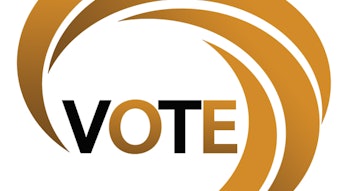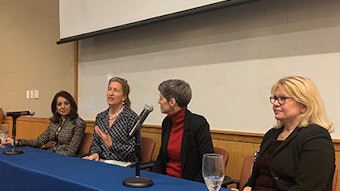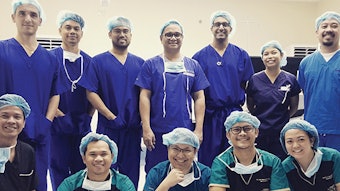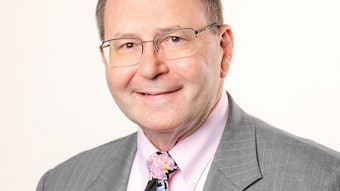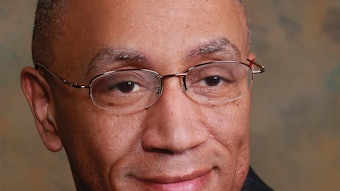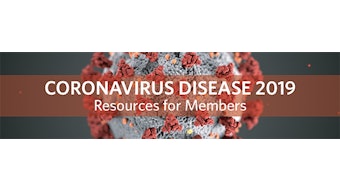Clinical Practice Guideline: Ménière’s Disease
Ménière’s disease is a clinical condition defined by spontaneous vertigo attacks, each lasting 20 minutes to 12 hours, with documented low- to mid- frequency sensorineural hearing loss in the affected ear before, during, or after one of the episodes of vertigo. Prevalence estimates as low as 3.5 in 100,000 and as high as 513 in 100,000 have been reported from Ménière’s disease studies worldwide.
Adapted from the April 2020 Supplement to Otolaryngology–Head and Neck Surgery. Read the guideline at otojournal.org.
Ménière’s disease is a clinical condition defined by spontaneous vertigo attacks, each lasting 20 minutes to 12 hours, with documented low- to mid- frequency sensorineural hearing loss in the affected ear before, during, or after one of the episodes of vertigo. Prevalence estimates as low as 3.5 in 100,000 and as high as 513 in 100,000 have been reported from Ménière’s disease studies worldwide.
“Ménière’s disease has a lot of factors and can be mimicked by other illnesses. To add to that, it is an episodic disease that can take months, or even years, to diagnose,” said Gregory J. Basura, MD, PhD, Chair of the Guideline Development Group (GDG). Meredith E. Adams, MD, and Ashkan Monfared, MD, served as Assistant Chairs, and Seth R. Schwartz, MD, MPH, served as Methodologist.
To improve the diagnostic workup and treatment outcomes for Ménière’s disease, this clinical practice guideline (CPG) used the best available published scientific and/or clinical evidence to enhance diagnostic accuracy and appropriate therapeutic interventions (medical and surgical), while reducing unindicated diagnostic testing and/or imaging.
“The guideline aims to reduce the subjectivity of diagnosis and treatment for Ménière’s disease and to provide some objective standards based on the literature available today,” said Dr. Basura. “This new CPG gives providers some optimal tools with which to make their clinical decisions.”
The guideline discusses the background on possible causes of Ménière’s disease, disorders that present similarly to it, and the ways in which the disease can progress. Due to the variability in clinical presentation in patients with definite and probable Ménière’s disease, it is important to note that it may take many months to make a full and accurate diagnosis of the disease.
Ménière’s disease is almost exclusively reported in adults, with less than three percent of cases estimated to occur in children younger than 18 years. The disease is most prevalent between ages 40 to 60 years, with peak onset in the 40s and 50s. In many patients, the most detrimental decline in hearing and balance function occurs within the first decade of diagnosis, yet patients continue to have long-standing deficits that make Ménière’s disease a chronic disease.
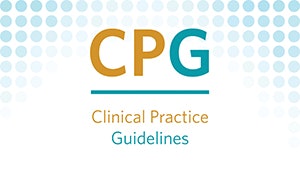
Accompanying Resources:
- Plain Language Summary
- Executive Summary
- Slide deck
- Podcasts
- Patient handouts (in both English and Spanish)
- Official quick-reference pocket guide and app
Access all these resources and more at www.entnet.org/MDCPG
Guideline Key Action Statements (KAS)
KAS1: Diagnosis of Ménière’s Disease (recommendation)
Clinicians should diagnose definite or probable Ménière’s disease in patients presenting with two or more episodes of vertigo lasting 20 minutes to 12 hours (definite) or up to 24 hours (probable) and fluctuating or non-fluctuating sensorineural hearing loss, tinnitus, or pressure in the affected ear, when these symptoms are not better accounted for by another disorder.
KAS2: Assessing for Vestibular Migraine (recommendation)
Clinicians should determine if patients meet diagnostic criteria for vestibular migraine when assessing for Ménière’s disease.
KAS3: Audiometric Testing (strong recommendation)
Clinicians should obtain an audiogram when assessing a patient for the diagnosis of Ménière’s disease.
KAS4: Utility of Imaging (option)
Clinicians may offer magnetic resonance imaging (MRI) of the internal auditory canal (IAC) and posterior fossa in patients with possible Ménière’s disease and audiometrically verified asymmetric sensorineural hearing loss.
KAS5: Vestibular or Electrophysiologic Testing (recommendation against)
Clinicians should not routinely order vestibular function testing or electrocochleography to establish the diagnosis of Ménière’s disease.
KAS6: Patient Education (recommendation)
Clinicians should educate patients with Ménière’s disease about the natural history, measures for symptom control, treatment options, and outcomes.
KAS7: Symptomatic Management of Vertigo (recommendation)
Clinicians should offer a limited course of vestibular suppressants to patients with Ménière’s disease for management of vertigo only during Ménière’s disease attacks.
KAS8: Symptom Reduction and Prevention (recommendation)
Clinicians should educate patients with Ménière’s disease on dietary and lifestyle modifications that may reduce or prevent symptoms.
KAS9: Oral Pharmacotherapy for Maintenance (option)
Clinicians may offer diuretics and/or betahistine for maintenance therapy to reduce symptoms or prevent Ménière’s disease attacks.
KAS10: Positive Pressure Therapy (recommendation against)
Clinicians should not prescribe positive pressure therapy for patients with Ménière’s disease.
KAS11: Intratympanic Steroid Therapy (option)
Clinicians may offer, or refer to a clinician who can offer, intratympanic (IT) steroids to patients with active Ménière’s disease not responsive to noninvasive treatment.
KAS12: Intratympanic Gentamicin Therapy (recommendation)
Clinicians should offer, or refer to a clinician who can offer, intratympanic (IT) gentamicin to patients with active Ménière’s disease not responsive to non-ablative therapy.
KAS13: Surgical Ablative Therapy (recommendation)
Clinicians may offer, or refer to a clinician who may offer, labyrinthectomy in patients with active Ménière’s disease who have failed less definitive therapy and have non-usable hearing.
KAS14a: Role of Vestibular Therapy for Chronic Imbalance (recommendation)
Clinicians should offer vestibular rehabilitation/physical therapy for Ménière’s disease patients with chronic imbalance.
KAS14b: Role of Vestibular Therapy for Acute Vertigo (recommendation against)
Clinicians should not recommend vestibular rehabilitation/physical therapy for managing acute vertigo attacks in patients with Ménière’s disease.
KAS15: Counseling for Amplification and Hearing Assistive Technology (recommendation)
Clinicians should counsel patients, or refer to a clinician who can counsel patients, with Ménière’s disease and hearing loss on the use of amplification and hearing assistive technology.
KAS16: Patient Outcomes (recommendation)
Clinicians should document resolution, improvement, or worsening of vertigo, tinnitus, and hearing loss and any change in quality of life in patients with Ménière’s disease after treatment.
The GDG consisted of 21 members who represented experts in advanced practice nursing, audiology, consumer advocacy, emergency medicine, family medicine, otolaryngology, otology and neurotology, otolaryngic allergy, neuroradiology, and neurology.
The CPG is intended for all healthcare providers in any setting who are likely to encounter, diagnose, treat, and/or monitor patients with suspected Ménière’s disease. This includes emergency medicine, primary care, otolaryngology, neurology, audiology, and physical/vestibular therapy. The target patient for the guideline is anyone 18 years of age or older who has a suspected diagnosis of definite or probable Ménière’s disease.
The Ménière’s disease CPG was created using the methods listed in Rosenfeld RM, Shiffman RN, and Robertson P. Clinical Practice Guideline Development Manual, Third Edition: A Quality-Driven Approach for Translating Evidence Into Action. Otolaryngol Head Neck Surg. 2013;148(1S):S1-S55. doi:10.1177/0194599812467004 (https://journals.sagepub.com/doi/full/10.1177/0194599812467004)
The full guideline and other resources are available at www.entnet.org/MDCPG and in Otolaryngology–Head and Neck Surgery as published at otojournal.org.
Guideline authors:
Gregory J. Basura, MD, PhD, Meredith E. Adams, MD, Ashkan Monfared, MD, Seth R. Schwartz, MD, MPH, Patrick J. Antonelli, MD, Robert Burkard, PhD, Matthew L. Bush, MD, PhD, Julie Bykowski, MD, Maria Colandrea, DNP, NP-C, Jennifer Derebery, MD, Elizabeth A. Kelly, MD, Kevin A. Kerber, MD, Charles F. Koopman, MD, MHSA, Amy Angie Kuch, Evie Marcolini, MD, FAAEM, FACEP, FCCM, Brian J. McKinnon, MD, MBA, MPH, Michael J. Ruckenstein, MD, MSC, Carla V. Valenzuela, MD, Alexis Vosooney, MD, Sandra A. Walsh, BS (MDT), Lorraine C. Nnacheta, MPH, DrPH, Nui Dhepyasuwan, MEd, and Erin M. Buchanan, MPH
Endorsements:
American Academy of Otolaryngic Allergy (AAOA), American Balance Society (ABS), American College of Radiology (ACR), American Headache Society (AHS), American Neurotology Society (ANS), American Otological Society (AOS), American Speech-Language Hearing Association (ASHA), Society of Interventional Radiology (SIR), Society of Otorhinolaryngology Head-Neck Nurses (SOHN), The Triological Society, Vestibular Disorders Association (VeDA)
Affirmation of Value:
American Academy of Neurology (AAN)
Disclaimer:
This clinical practice guideline is not intended as an exhaustive source of guidance for managing patients with Ménière’s disease. Rather, it is designed to assist clinicians by providing an evidence-based framework for decision-making strategies. The guideline is not intended to replace clinical judgment or establish a protocol for all individuals with this condition and may not provide the only appropriate approach to diagnosing and managing this program of care. As medical knowledge expands, and technology advances, clinical indicators and guidelines are promoted as conditional and provisional proposals of what is recommended under specific conditions but are not absolute. Guidelines are not mandates. These do not and should not purport to be a legal standard of care. The responsible physician, based on all circumstances presented by the individual patient, must determine the appropriate treatment. Adherence to these guidelines will not ensure successful patient outcomes in every situation. The AAO-HNSF emphasizes that these clinical guidelines should not be deemed to include all proper treatment decisions or methods of care or to exclude other treatment decisions or methods of care reasonably directed to obtaining the same results.
CPG1



